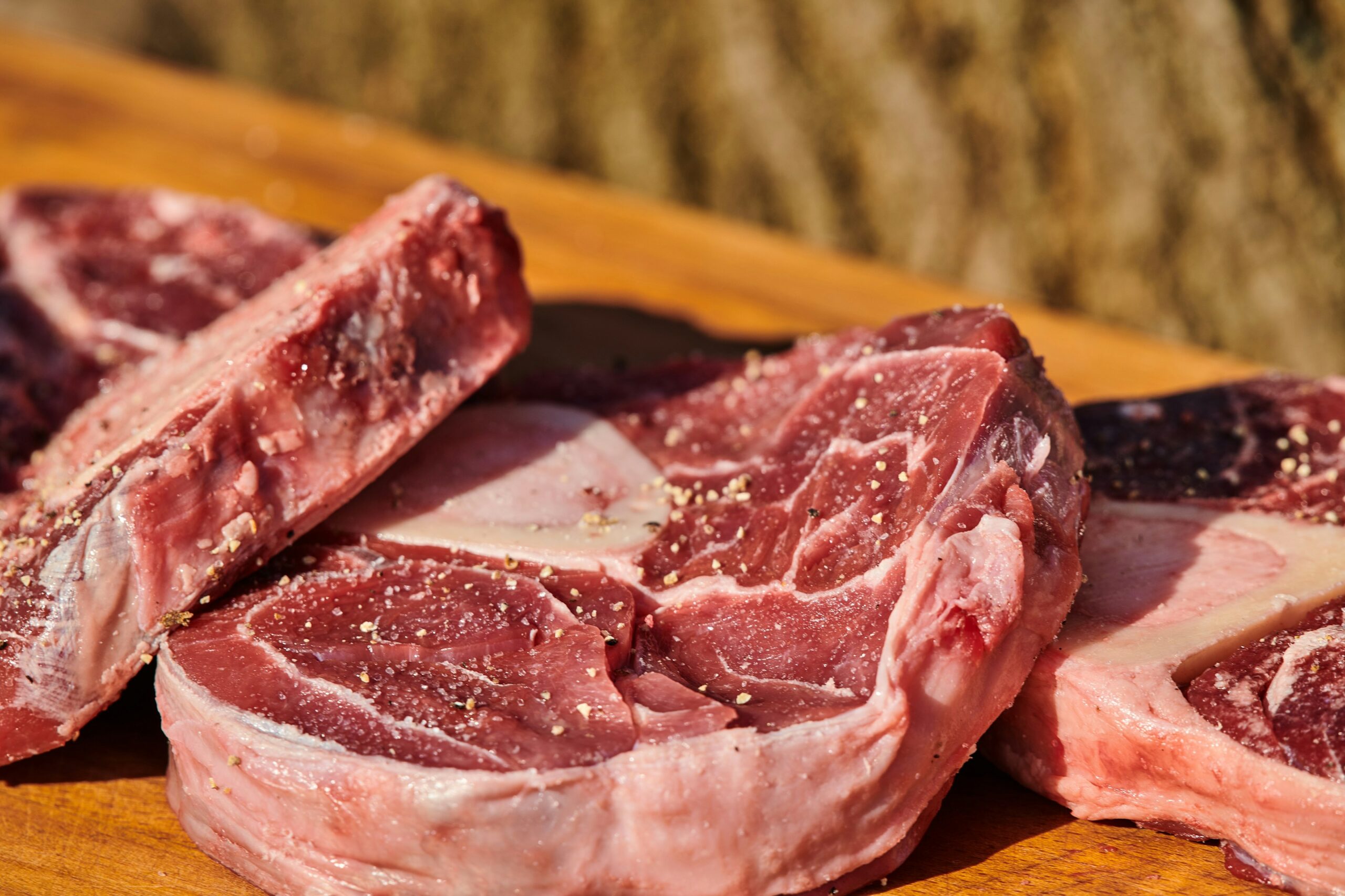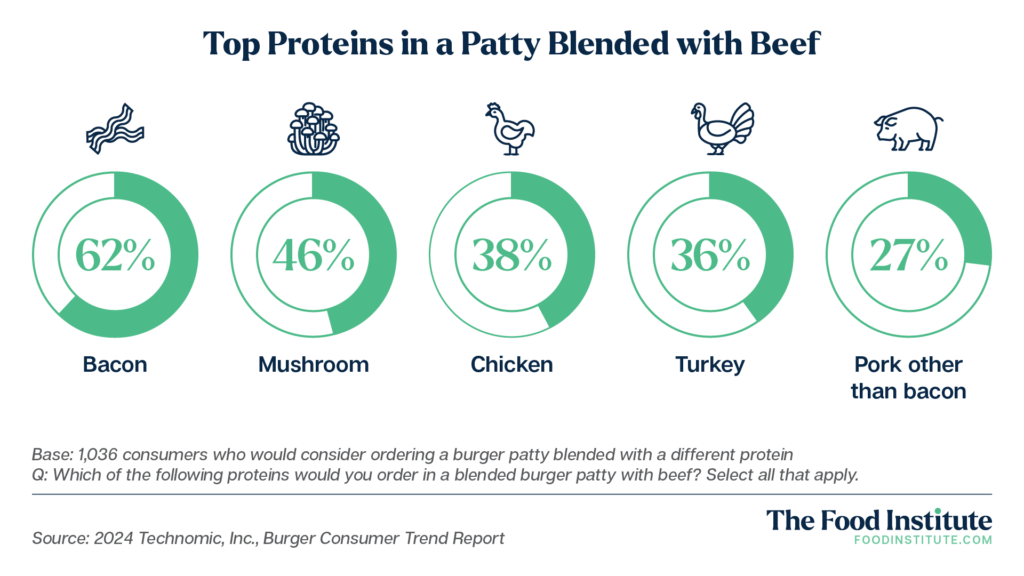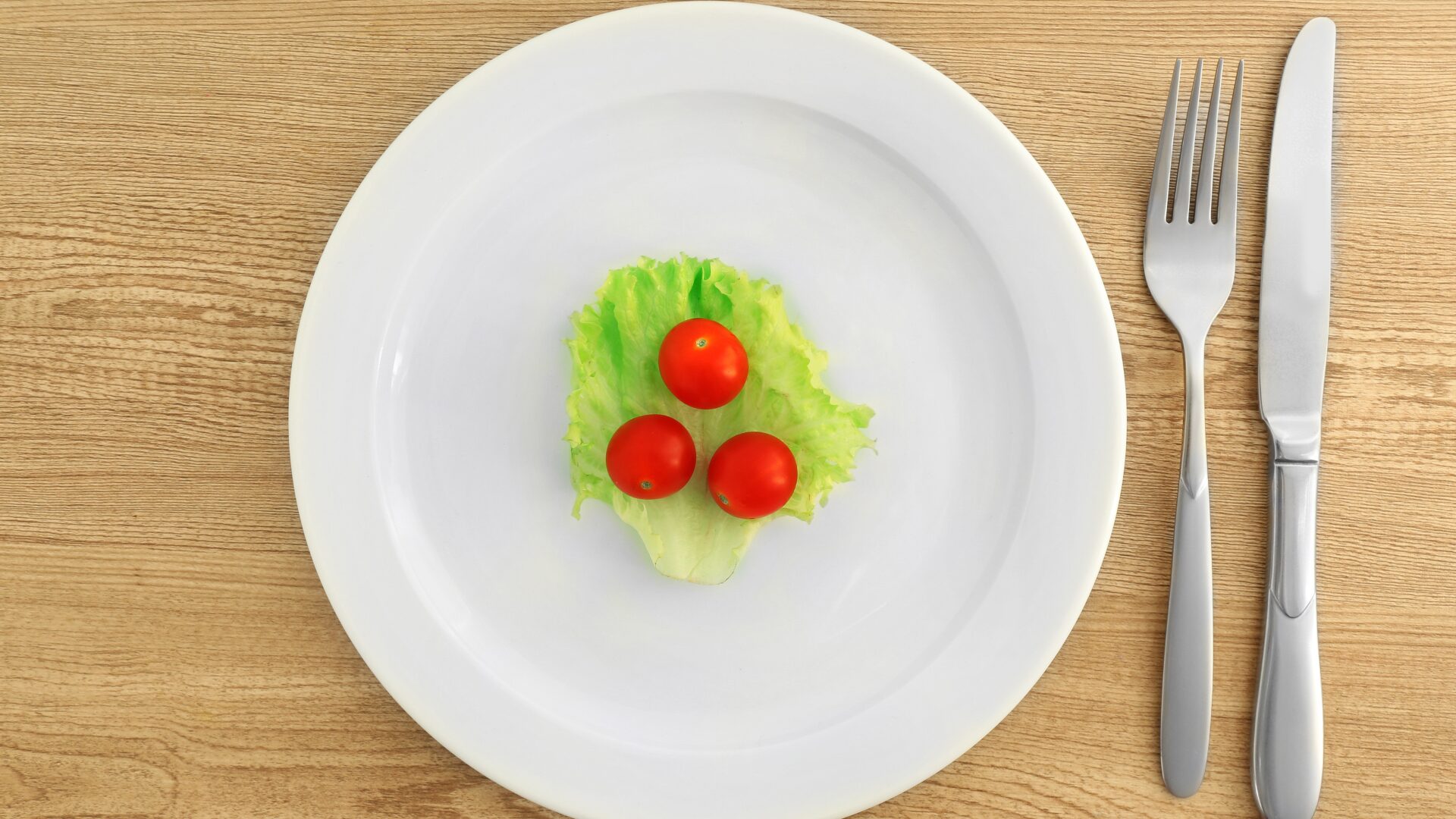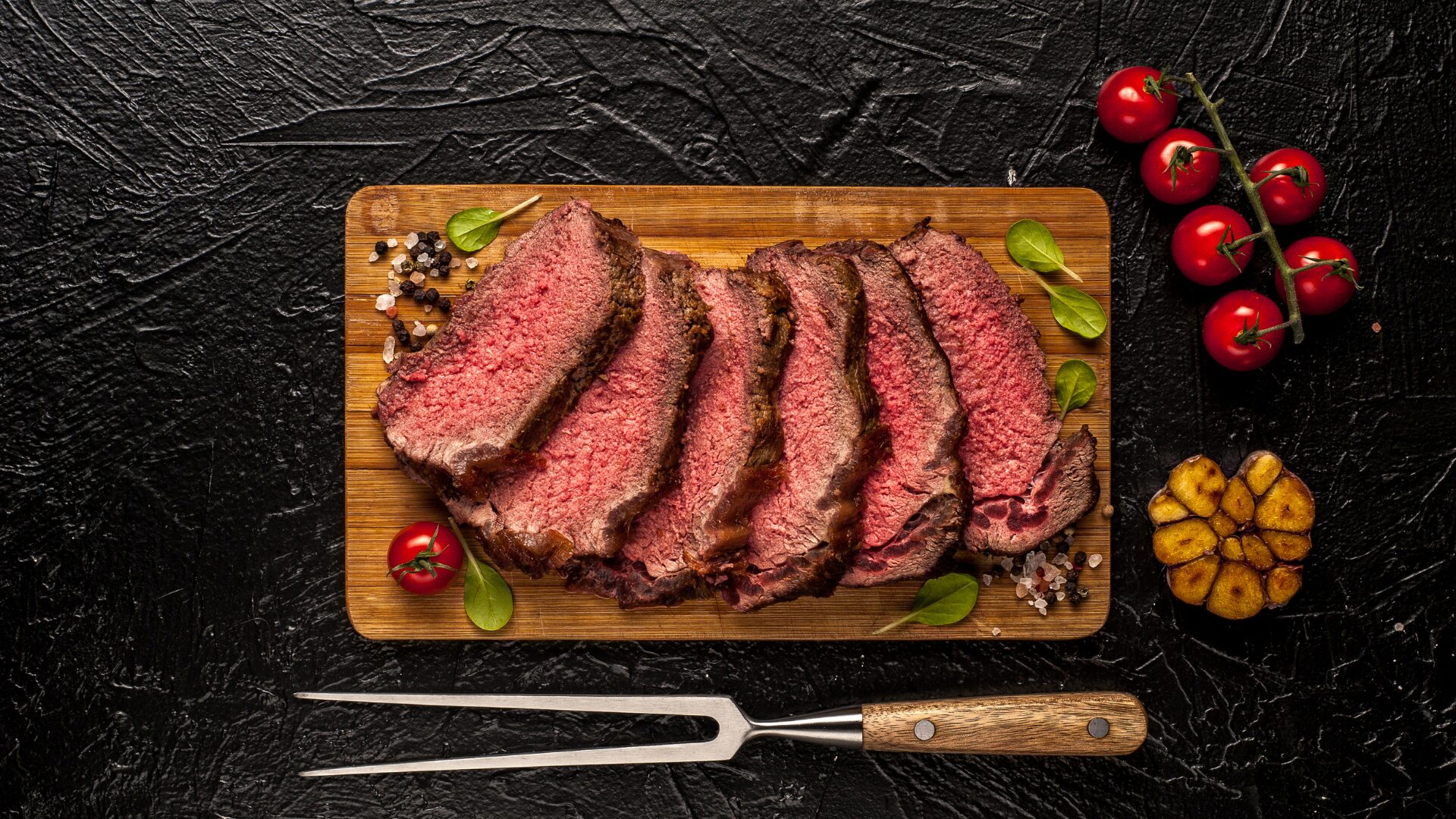Prices, environmental concerns, and healthier eating advice be damned: 70% of consumers still want their beef. That’s the latest from Technomic’s 2024 Center of the Plate: Beef and Pork Consumer Trend Report.
The report found the demand for protein has driven an increase in beef purchases at food service locations since 2022, with restaurants being a significant driver.
The consumer love affair with beef continues despite the latest Bureau of Labor Statistics figures that reveal beef prices are up as much as $2 per pound compared to last year; recent environmental reports estimate the beef industry contributes 14.5% of global greenhouse gas emissions, mainly in the form of methane; and advice from healthier eating advocates urges Americans to consume a more plant-based diet.
Registered dietitian Catherin Rall told The Food Institute much of the attraction of beef is cultural.
“A lot of people see beef as a premium meat and associate it with things like prosperity and masculinity. Beef is also incredibly rich in fat and protein, so our bodies are primed to crave it,” Rall said, noting federal subsidies, restaurant menus, and advertising all reinforce beef’s place “in our grocery stores and on our table.”
That doesn’t mean consumers are ignoring price. Online meat purveyors like Omaha Steaks and Meat N’ Bone said there’s growing interest in buying meat directly from farmers and stocking their freezers.
Omaha Steaks has seen a 52% increase in business since 2019. Nate Rempe, president and CEO, Omaha Steaks, said the industry is expecting a 3% drop in production this year, which likely will have an impact on prices.
“Rising meat prices are often most noticeable at your local grocery store and restaurants which typically have quicker reactions to supply chain price increases they pass on to their customers. Those more dependent on imported meats often see prices rise due to transit, too, versus those of us based in the Heartland,” Rempe said.
“Many Americans have adapted by being smarter shoppers and looking beyond prices alone, but value – particularly with meats. The average American family throws out $1,600 of food each year due to spoilage. That’s a significant dent in an already increased food bill for most.”
Gabriel Llaurado, co-founder chief marketing officer of Meat N’ Bone, said consumers also are interested in premium cuts sourced from smaller farms with high-quality programs.
“Yes, folks are still hankering for their steaks despite market pressures at the moment,” Llaurado said.
In other words, there’s no need to chew the fat with your local butcher about their summer prospects with expensive beef prices – they’re probably doing just fine.













